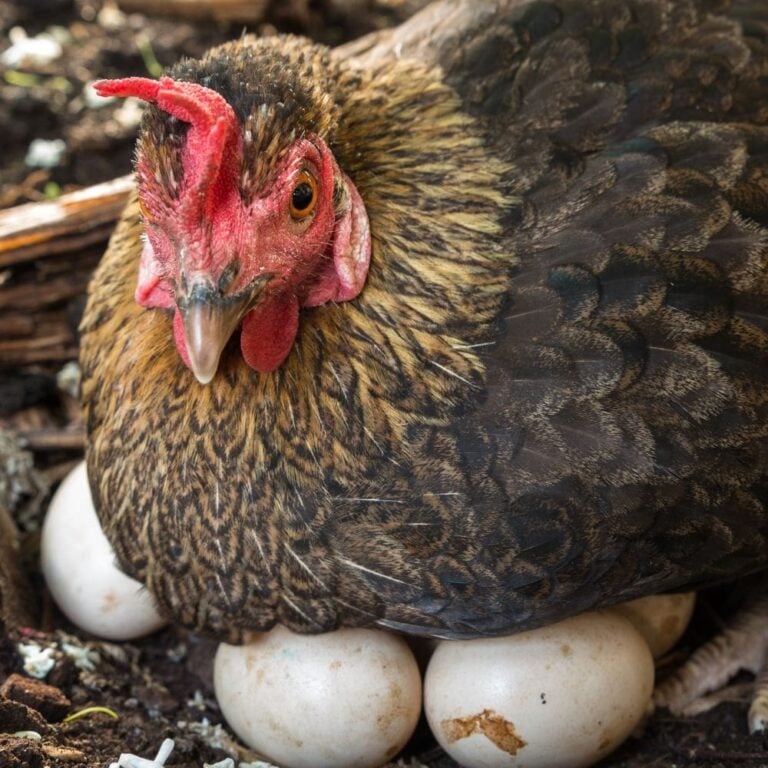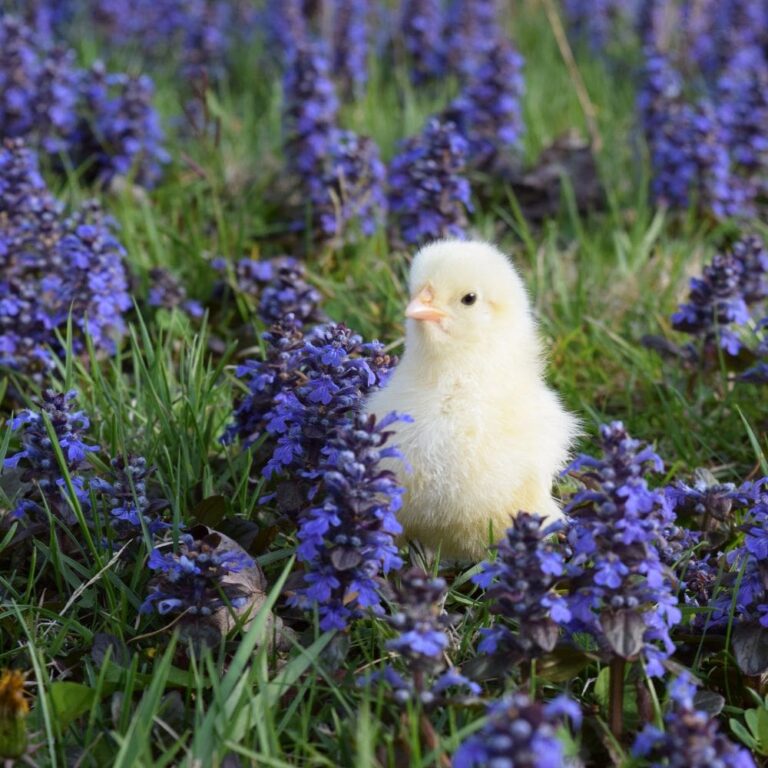Not sure if some of your eggs are good or bad? Try the egg float test!
Why do you need to know about the egg float test? Chickens are masters at hiding their eggs if they want to. In other words, they don’t always lay their eggs in the coop like good little chickens should.
Every so often, I come across a nest of eggs on the homestead – and I have no idea how long they’ve been there, and if they’re good or bad.
Chickens like to hide their eggs in dark, tight places. Why? Eggs that are hidden are less likely to be snagged by a predator. Chickens are smart, and they know this.
At the same time, if a chicken is broody (wants to hatch eggs), which requires sitting for long periods of time, a dark place is best – she’s more likely to be left alone.
Let’s say you come across a nest, and aren’t sure how old the eggs are, and whether you should just toss them. This is where the egg float test comes in!
Also, if you have store-bought eggs in your refrigerator that are past the expiration date, it’s worth getting those eggs out of the egg carton and trying the egg float test to determine if they’re okay to use.
If you’ve never tried the egg float test, it’s a great and visually easy way to tell if eggs are fresh.
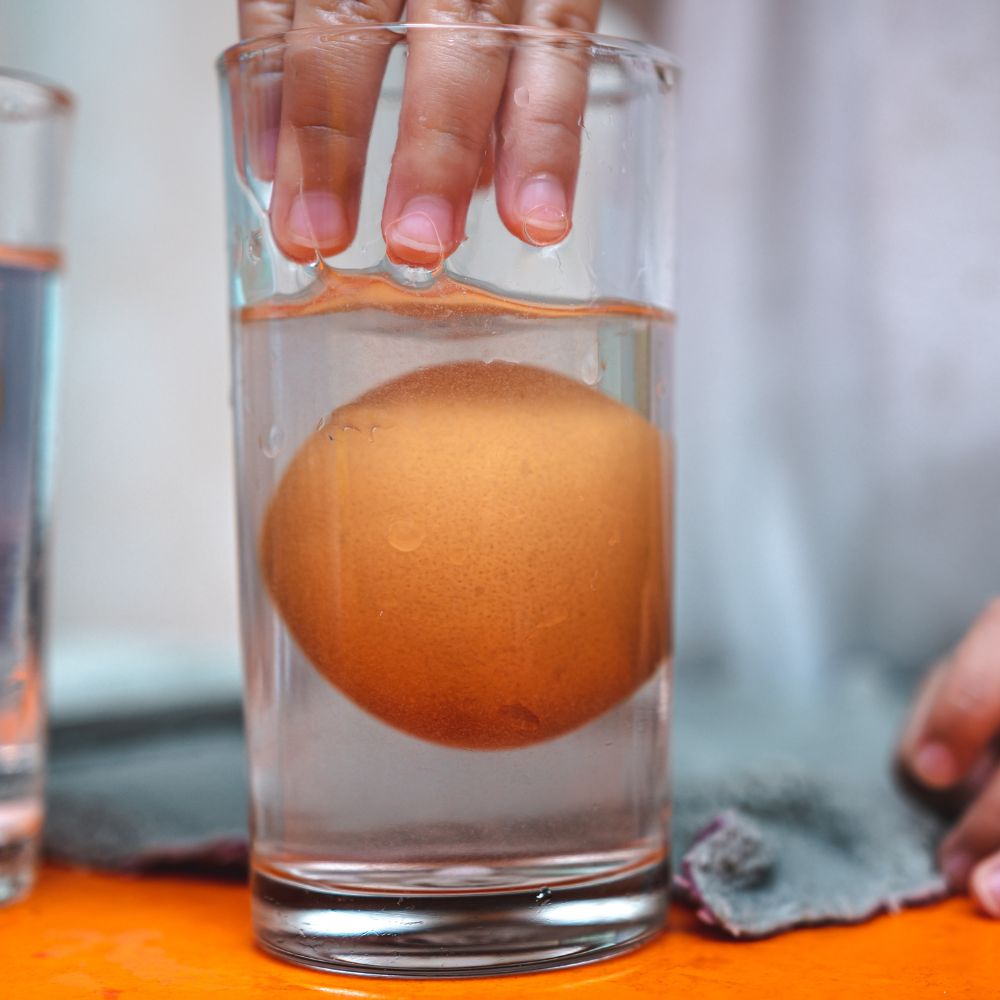
Table of Contents (Quickly Jump To Information)
How do you perform the egg float test?
So now you know you can do an egg float test, but how? The egg float test is easy.
First, grab a cup of cool (not ice cold and definitely not hot) water.
If you want to try the egg float test using a mason jar, make it easy on yourself, and use a wide-mouthed jar so you can get the egg out easier. A cup of water or a bowl of water works well, too.
To complete the egg float test, just gently insert your egg into the water.
According to the egg float test, if your eggs rise to the top of the water, they’re too old to use (you’ve got yourself a bad egg). But if the egg sinks, they’re still fresh eggs and still perfectly good eggs to eat. Of course with anything, there’s a catch.
What does the egg float test mean if your egg sort of floats, but sort of sinks? If your egg suspends on one end, it’s technically still okay to eat, but you need to use it soon.
Personally, I usually toss these eggs to my pigs, since there are typically fresher eggs available. I know the pigs appreciate them. But if you NEED an egg in a pinch, these are still fresh enough to use.
And remember…
Once you’ve put the egg in water, you’ve stripped off the bloom, which means air can get into the egg quicker (and so can bacteria). At this point, you need to put the eggs in the fridge to prevent bacterial growth.
So, if the eggs sink, you’ll probably want to use them sooner rather than later. Learn more about how long eggs stay fresh.
Be sure you test eggs that do not have any cracks, it’s best not to use those due to the possibility of bacteria entering the egg.
Below is a video showing the egg float test in action! The egg float test works!
What’s the science behind the egg float test?
Good question.
Eggshells, as you might know, are porous, meaning they let air into them. Learn more about the anatomy of an egg here)
So…
The fresher an egg is, the less air it has inside it, so it sinks.
Old eggs, however, have more air in them because oxygen has had time to permeate the shell. So, they float. The air acts as a sort of floatation device (so to speak).
Because of this, the egg float test is considered an accurate way to test whether those eggs you found are okay to eat, or if you should just toss them.
It’s important to know that your eggs are fresh before eating them to prevent things like salmonella poisoning or other contamination.
Other Egg Freshness Tests
There are a couple of other ways besides the egg float test to tell if the eggs you found are fresh.
One option is to candle the eggs, just as you would if you were to hatch them. In this test, you’re looking to see how intact the yolk is (the more intact the more likely it’s fresh).
And, similar to the egg float test, you’re looking to see how much air is inside the egg. The more air space, the older the egg is. Of course, you would need to be familiar with how much air is in a fresh egg first.
Another test is to hold the egg up to your ear. If you hear a lot of movement, the egg is said to be old, but if you don’t hear anything, then the egg is fresh. Is this an old wives’ tale? Your guess is as good as mine.
These other methods are very subjective – they aren’t as absolute as the egg float test. It’s my opinion that the egg float test is the most reliable way to determine whether your eggs are still fresh. (or follow your chickens around all day and snatch up all the eggs immediately…which isn’t going to happen)
And let’s not forget the good ole sniff test. This works best once you crack the egg. It’s pretty clear if the egg has an unpleasant odor that you shouldn’t use it but it doesn’t really indicate an egg on its way out. It’s only a rotten egg test.
Personally, I prefer the egg float test, and I have more experience with it.
Summary
See, it’s not hard at all. It’s a quick and easy way to determine how fresh, or not fresh, your beloved chicken eggs are. Here’s to finding fresh eggs! 🎉
Now that you’ve determined which eggs are fresh using the egg float test, how about some egg recipes to help you use them up?
More Chicken Egg Articles:
- Learn more about Abnormal Chicken Eggs
- Why Is There Water in My Eggs?
- Combating Iron Deficiency for Better Eggs (podcast)
- 8 Unusual and Genius Hacks for Using Up Extra Eggs
- Why Lash Eggs are Important to Know About
- How a Rooster Fertilizes An Egg
- Why Won’t My Hens Use Their Nest Boxes
Chickens: Naturally Raising A Sustainable Flock is my best selling book about raising healthy hens! You’ll learn how to handle sticky first aid situations, raise baby chicks with the week-by-week checklist, how to give the best care even in the worst weather, and more!
Maat van Uitert is a backyard chicken and sustainable living expert. She is also the author of Chickens: Naturally Raising A Sustainable Flock, which was a best seller in it’s Amazon category. Maat has been featured on NBC, CBS, AOL Finance, Community Chickens, the Huffington Post, Chickens magazine, Backyard Poultry, and Countryside Magazine. She lives on her farm in Southeast Missouri with her husband, two children, and about a million chickens and ducks. You can follow Maat on Facebook here and Instagram here.

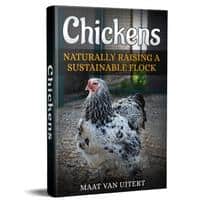
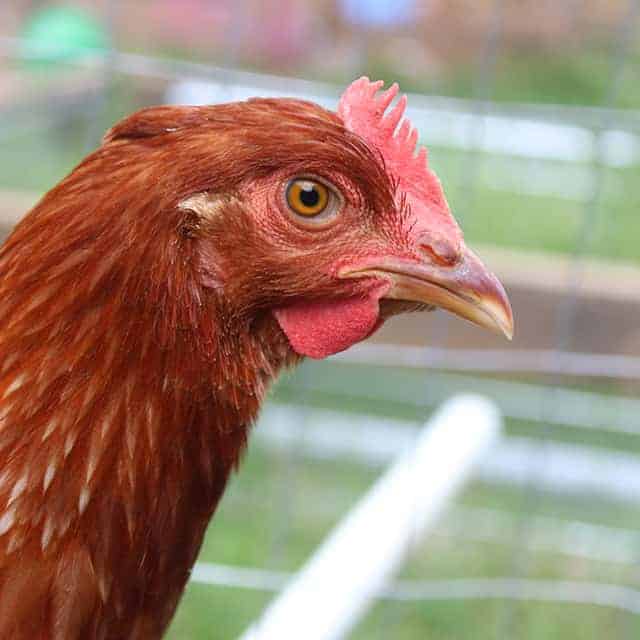
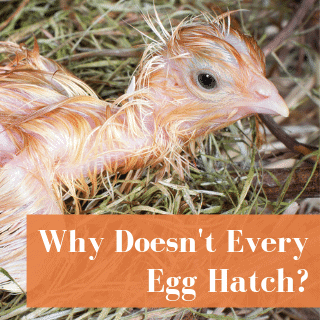
![How Many Roosters Are Enough? Giving Eggs To Broody Hens, Emergency First Aid Kits, Should I Help Chicks Hatch? How Do I Know Which Hen Laid Which Egg? [Podcast]](https://thefrugalchicken.com/wp-content/uploads/2016/03/how-many-roosters-do-I-need-feature-min.jpg)

